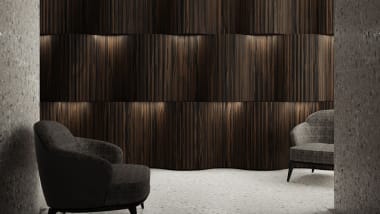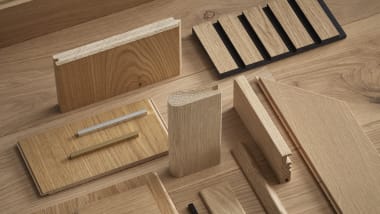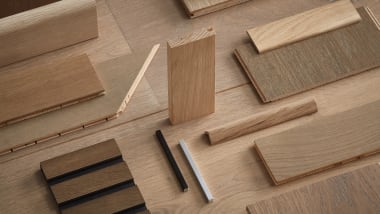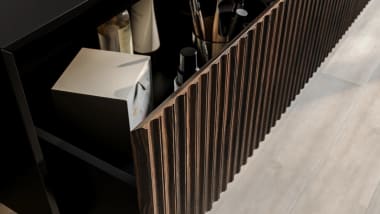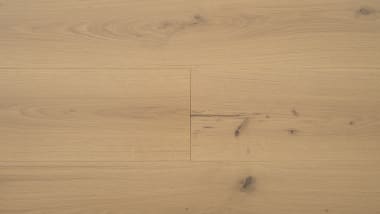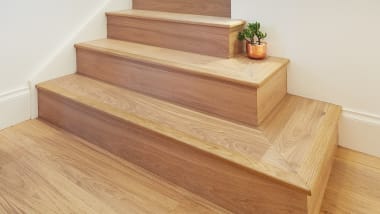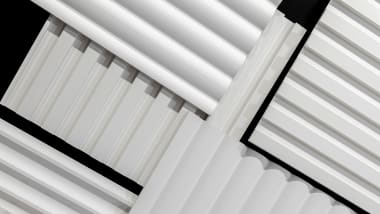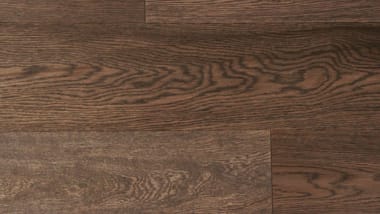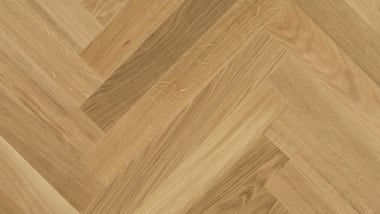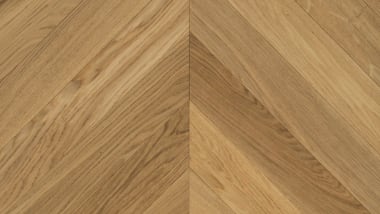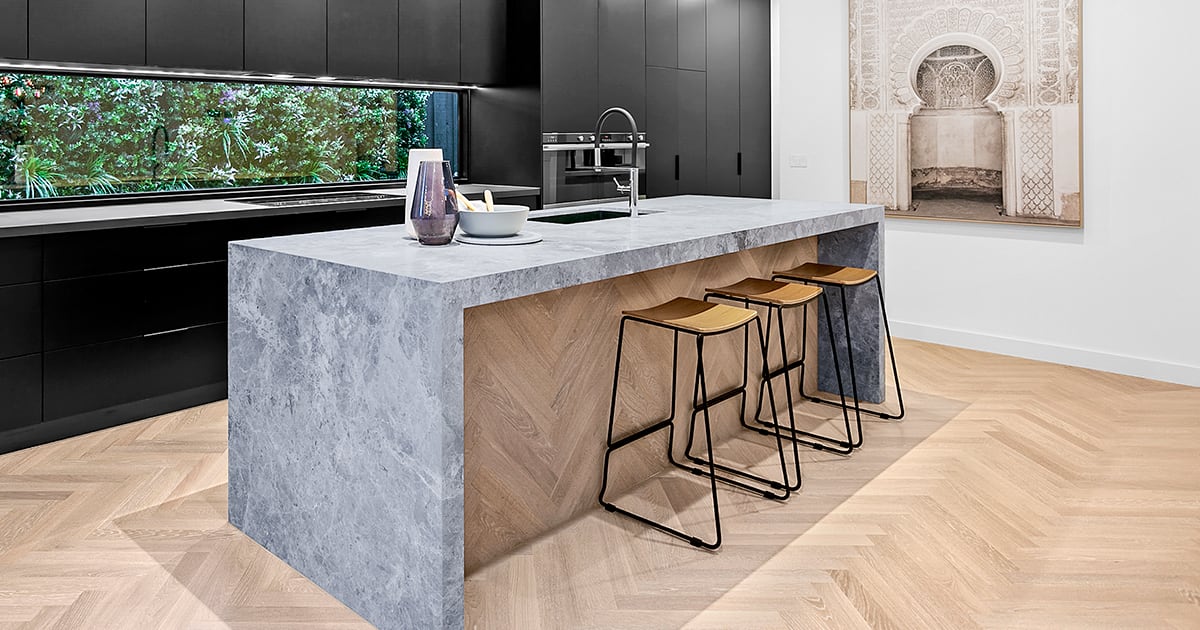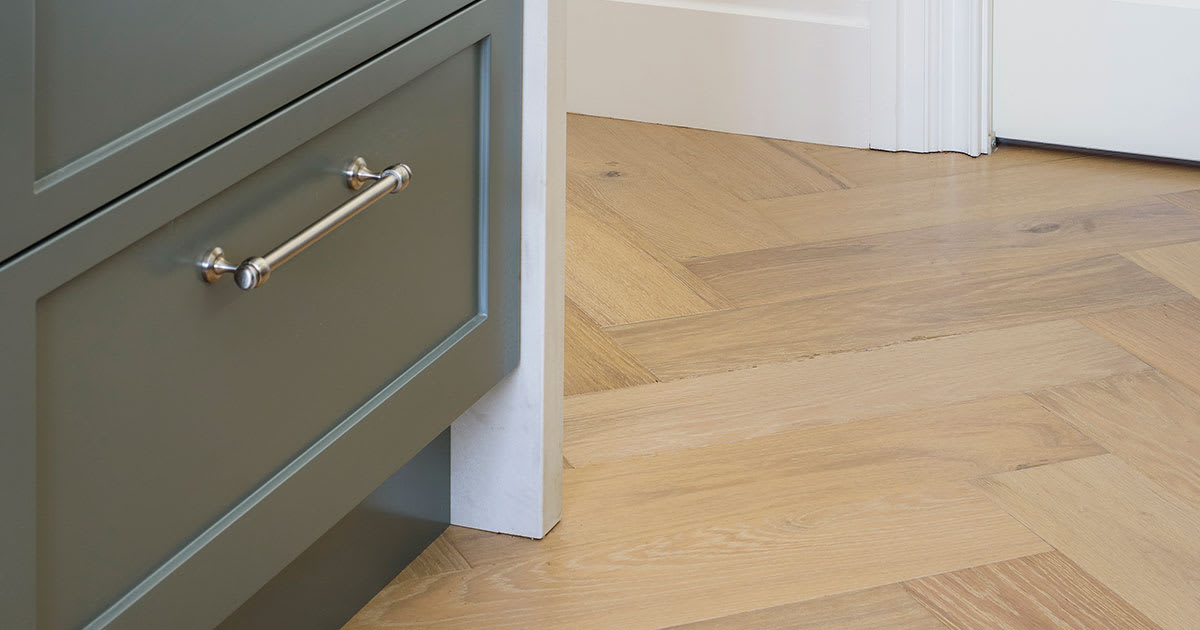Should You Install Timber Flooring Before or After Kitchen Cabinets?
30 May 2024
When building or renovating your kitchen, the age-old question arises: do you install flooring before cabinets or do cabinets go on top of flooring? Understanding the pros and cons of each approach can help ensure a seamless renovation and prevent future issues. Let’s dive into the key considerations for whether to install your timber flooring before or after your kitchen cabinets.
First, what’s the goal and purpose?
Before you decide to renovate your kitchen, make sure you have a plan and an ultimate goal you want to achieve. Whether it’s a rental apartment that needs to attract a tenant, or building your dream home, these considerations can greatly influence whether you lay down flooring or install your kitchen cabinets first.
For example, a landlord with multiple rental apartments may have costs as a first priority so in this instance, laying the flooring after cabinets will save on costs, whereas a home owner may feel more comfortable with spending extra on achieving a clean aesthetic finish due to it being their own home and spending many future years living in the house.
Havwoods Alabastro Herringbone timber flooring | Hargreaves Street, Mornington VIC. Design by Cahill Building Group
Flooring Before Cabinets
Opting to install timber flooring before your kitchen cabinets can really influence the aesthetics and functionality of your renovation. Installing your timber flooring before your kitchen cabinets ensures that your kitchen has a clean finish.
Pros:
A uniform appearance: Installing the flooring first creates a consistent and uniform look throughout your kitchen. This way, any future kitchen remodelling won't require additional flooring to match the existing one.
Easy installation: With no cabinets in the way, your flooring installation process is streamlined, making it easier to access and cover all areas uniformly.
Cons:
Potential Damage: Heavy cabinet installation can scratch or dent the new floor. So ensuring you have your floor adequately protected before you install cabinets will keep your brand new floor free from scratches, dents or other potential damage during cabinetry installation.
Havwoods Ryde Herringbone timber flooring | Adamstown Residential, NSW | Design: Tailored HQ | Builder: CBE Solutions | Photographer: Atelier Photography
Flooring After Cabinets
Installing your kitchen cabinets before your timber flooring is a strategy that can help with cost-effectiveness but will make installation slightly harder to navigate. To help with whether you should install your flooring after cabinets, here are some pros and cons:
Pros:
Cost Savings: Installing cabinets first reduces the amount of flooring needed, as you only install what is visible. This approach can save costs, particularly with high-quality timber.
Less Risk of Damage: With cabinets already in place, there's less risk of damaging the flooring during cabinet installation.
Cons:
Limited Flexibility: If your cabinet layout changes in the future, you may need to source and install additional flooring to fill the gaps left by the original cabinet footprint.
Height Adjustment Issues: Adding flooring after cabinets might require careful consideration of cabinet height for appliances like dishwashers to fit seamlessly.
Which Option is Best?
Choosing whether to install timber flooring before or after cabinets, as mentioned earlier really comes down to your goals and priorities. To further help, here are some other considerations:
Renovation Timeline: If you want to future-proof your kitchen layout, flooring before cabinets may be best. This allows for flexibility should you decide to rearrange the space later.
Budget: If saving costs is important, installing the cabinets first reduces the amount of flooring material needed.
Flooring Type: Consider the type of timber you're using. If it's prone to scratching or denting, cabinet-first installation might be wiser to prevent damage during cabinet installation.
Whichever process you decide to take will be fundamental in how your kitchen renovation will run. Remember to take your specific needs and goals into account to make the best choice for your kitchen.
If you are stuck and would like some support, please contact us or visit one of our showrooms where one of our friendly staff can assist you.



